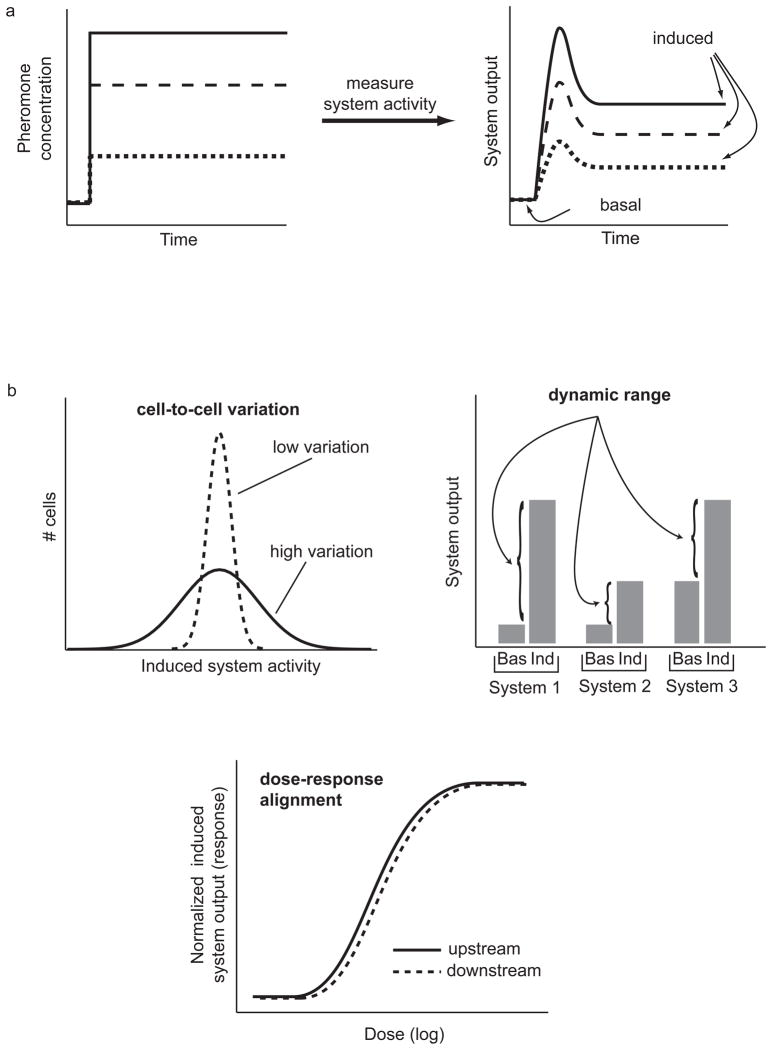Figure 3.
Breaking up time-dependent dose-responses into systems-level quantitative behaviors (SLQBs). a) Measurements of time-dependent dose-responses. Measurements of system response over time after stimulation with different levels of pheromone revealed that system activity at many measurement points reached a plateau level after a few minutes [11]. b) Three examples of SLQBs we are currently studying, shown in forward genetic studies to be under independent genetic regulation. (Top left) Cell-to-cell variation in system activity (both the variation in the signal reaching the nucleus, and the net variation of this signal combined with variation in gene expression). (Top right) Dynamic range also affects the amount of information the system can transmit. It is determined by both the basal (“Bas”) and induced (“Ind”) levels of system activity. (Bottom) Dose-response alignment. All three SLQBs impact how the system transmits information about external pheromone concentration by affecting the distinguishability of responses to different doses of pheromone [11].

